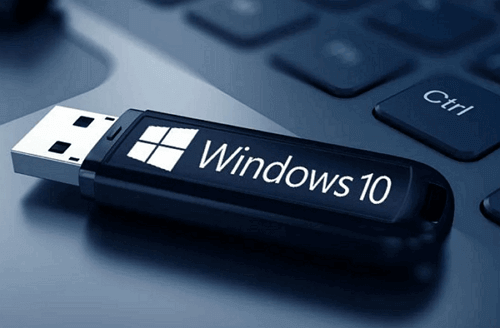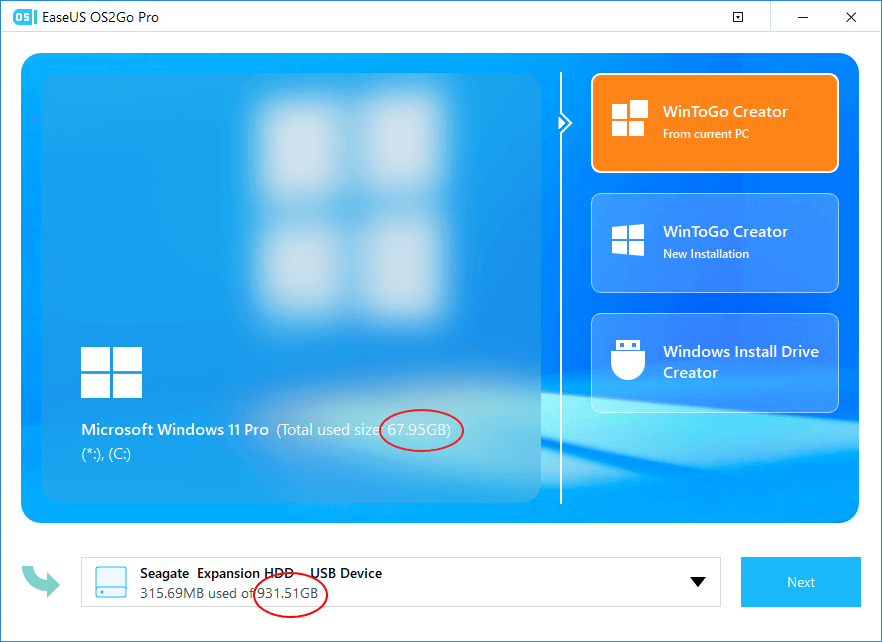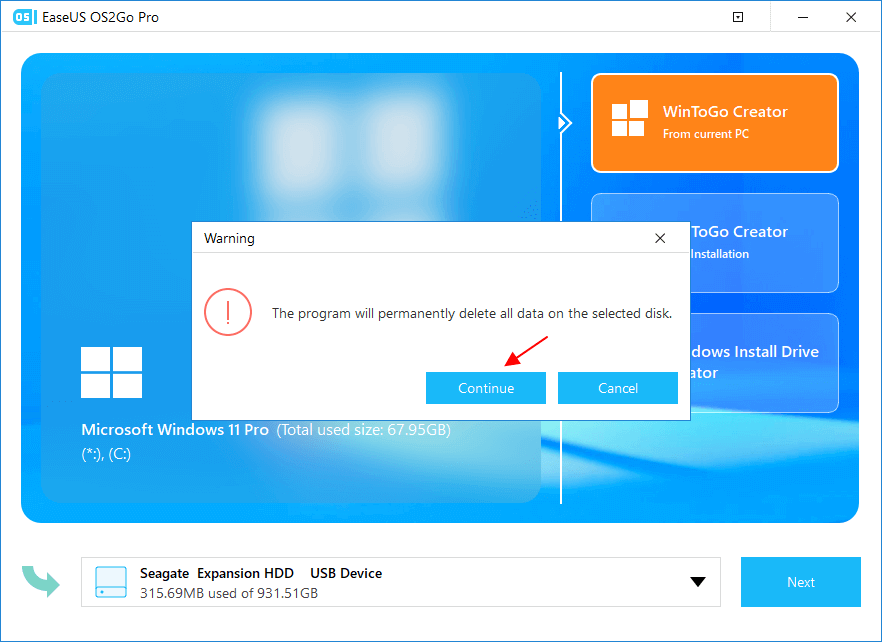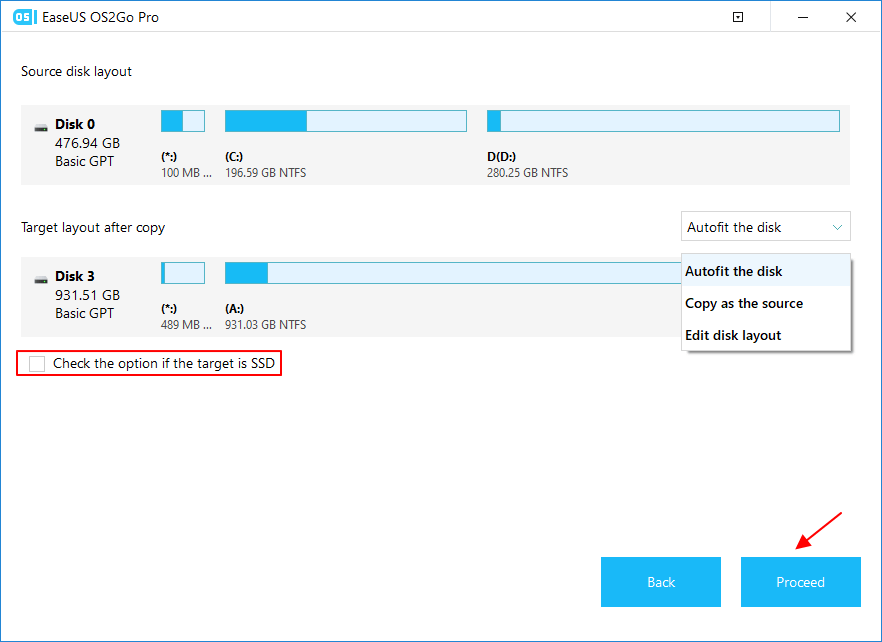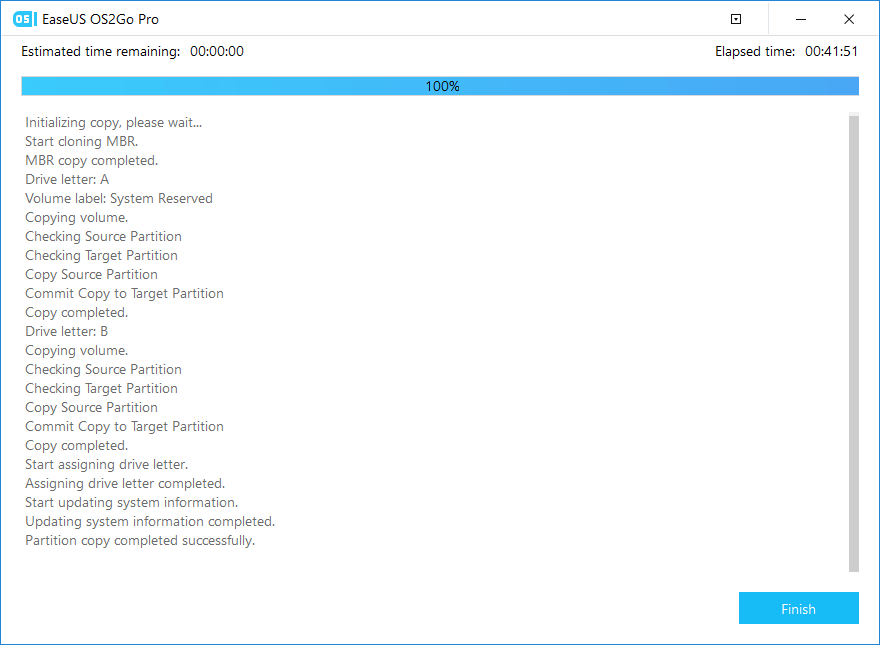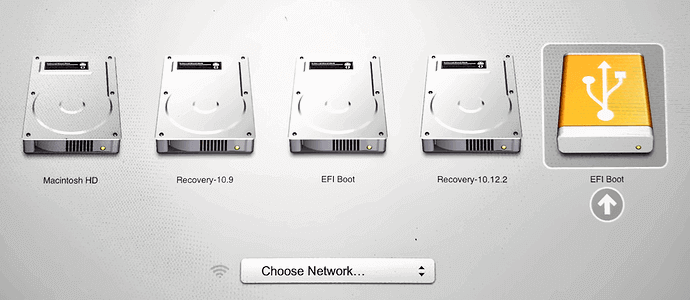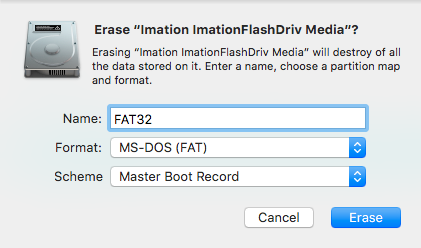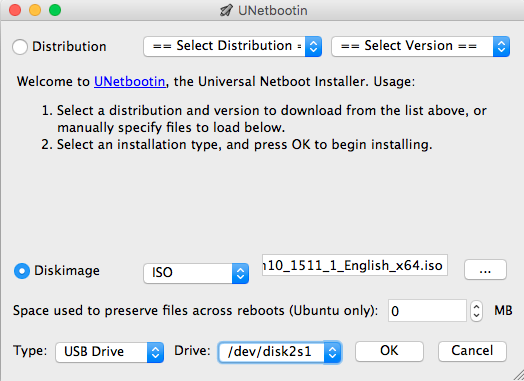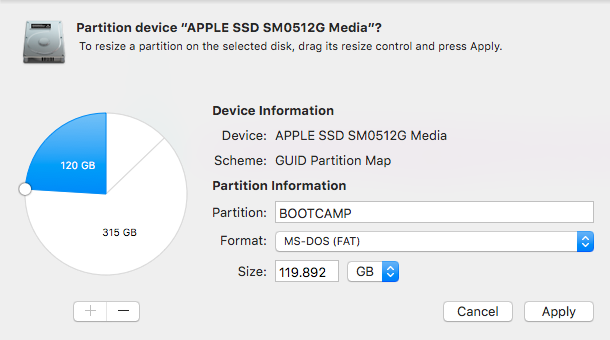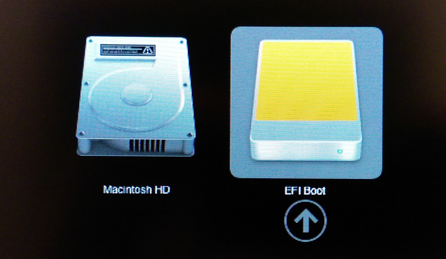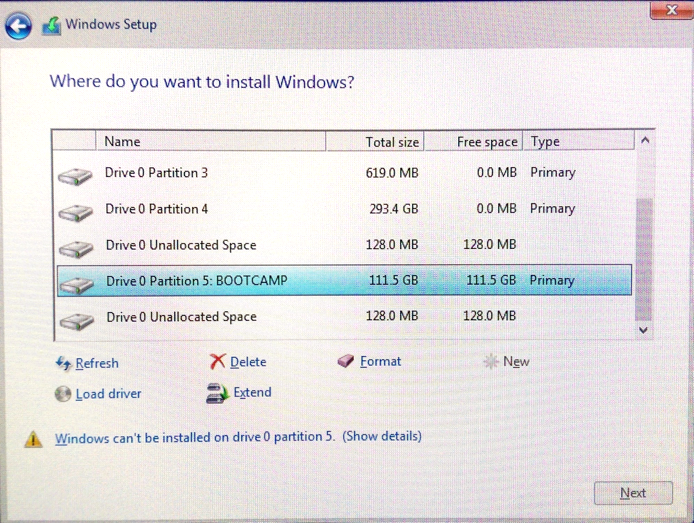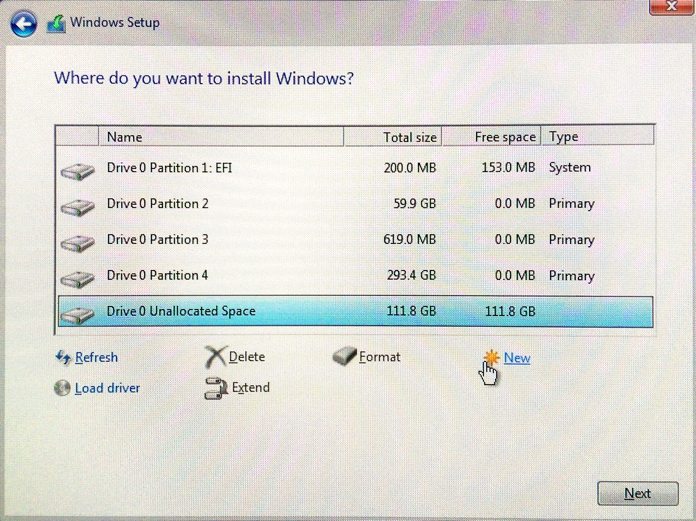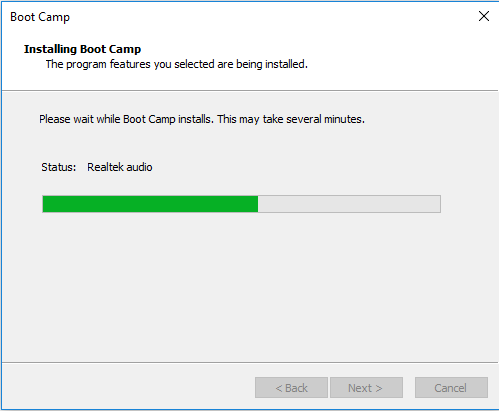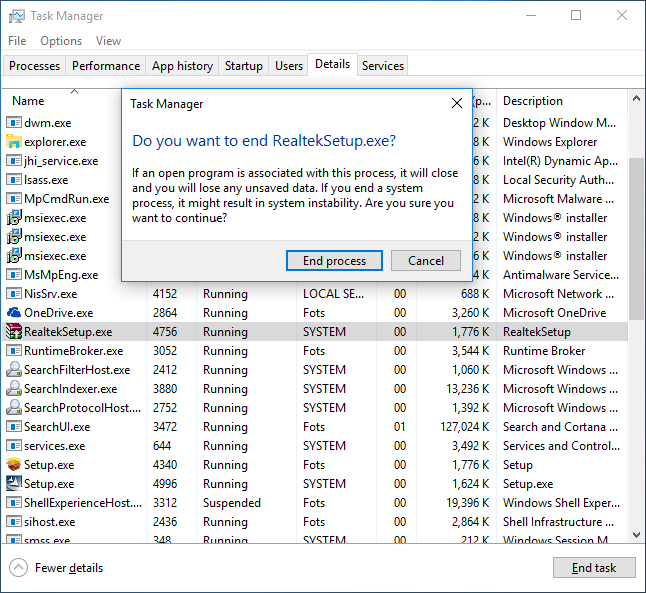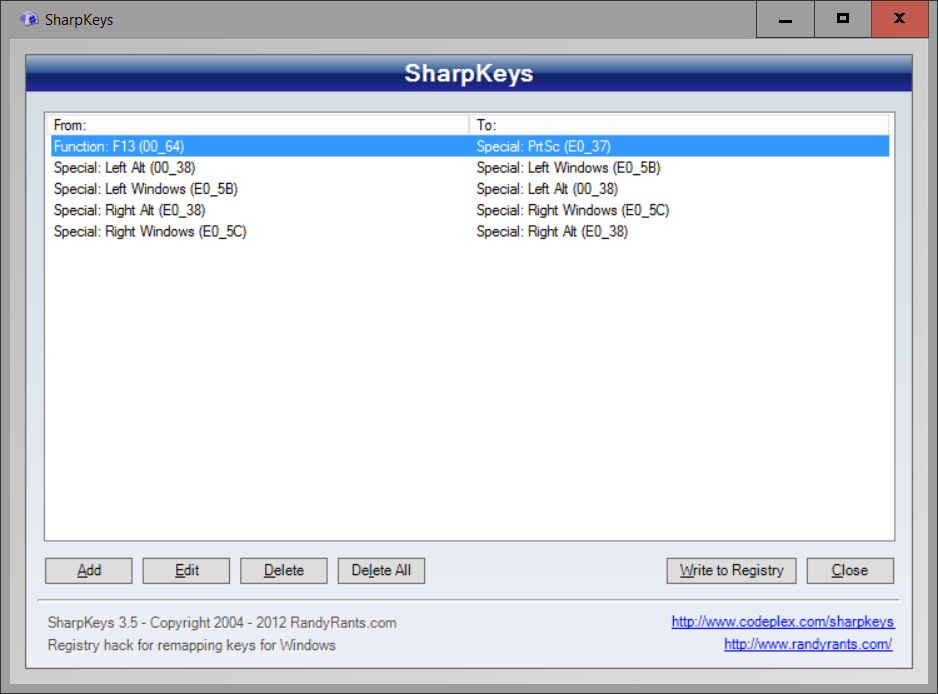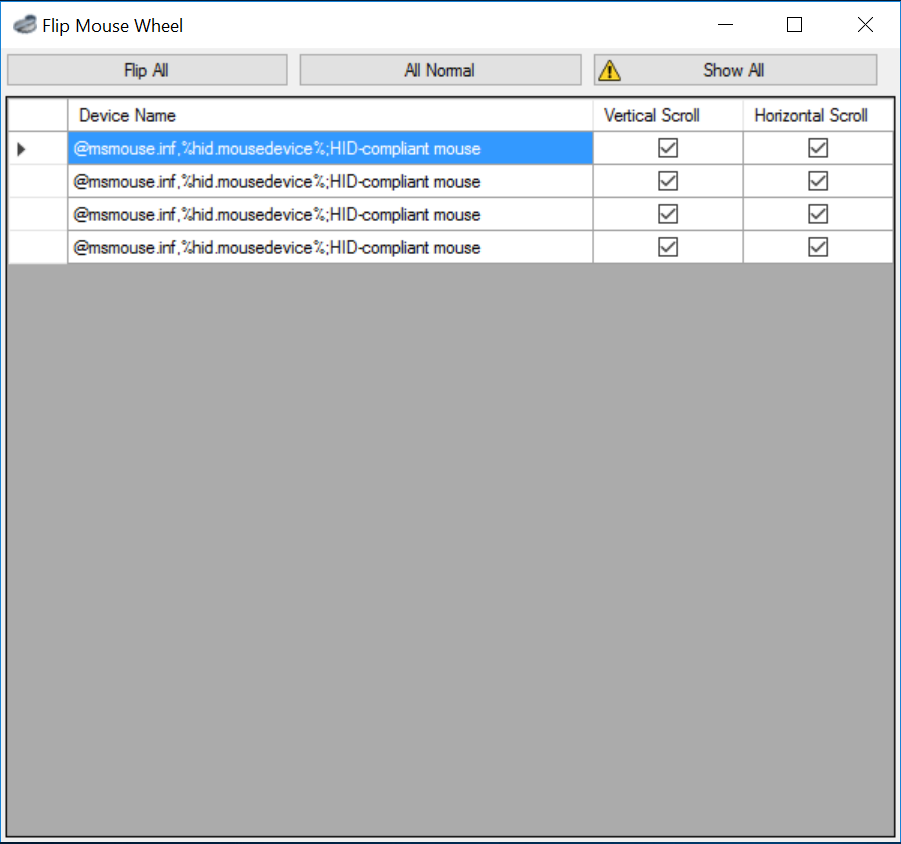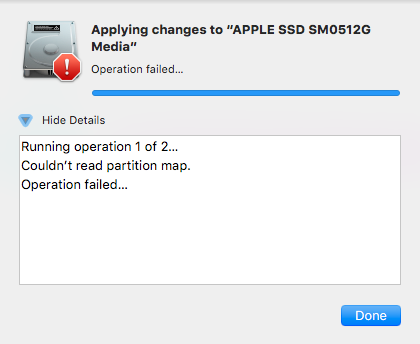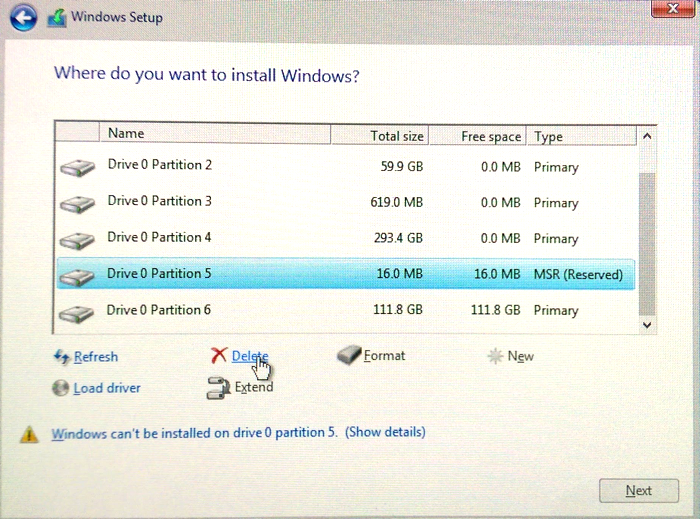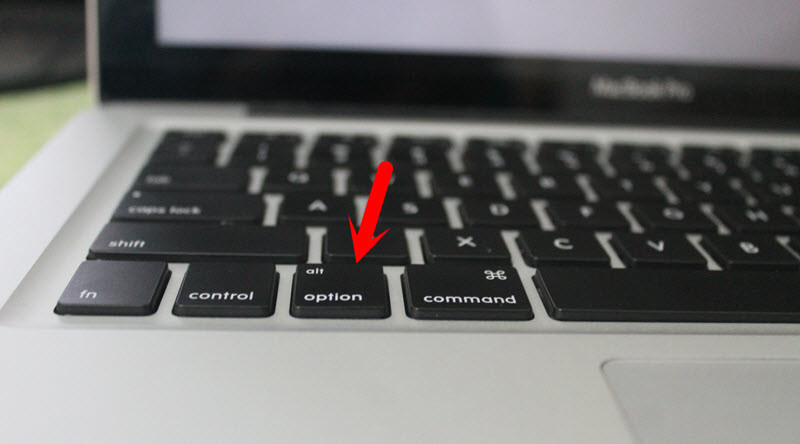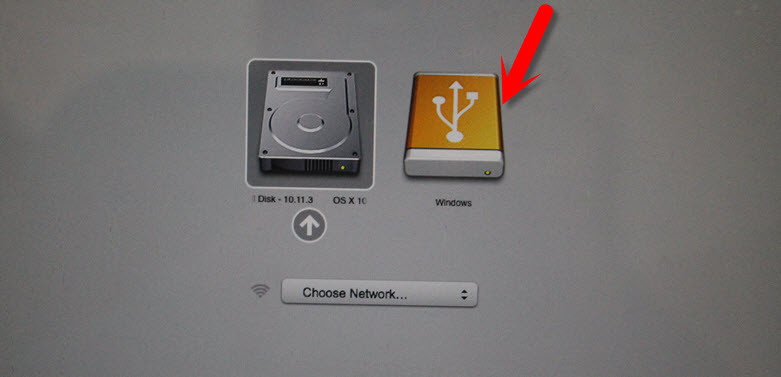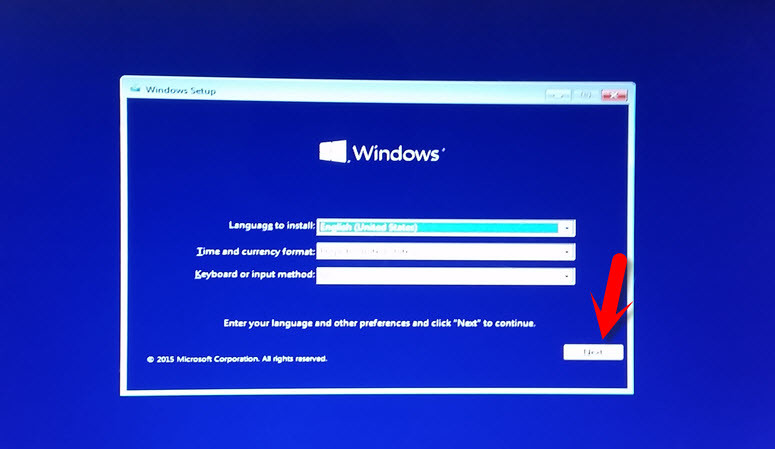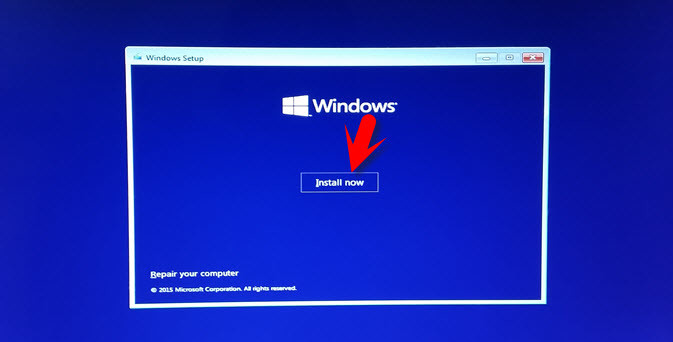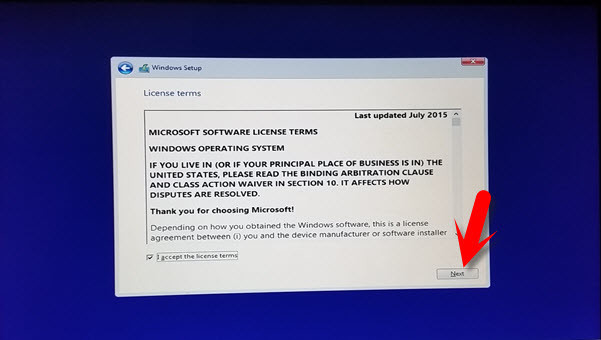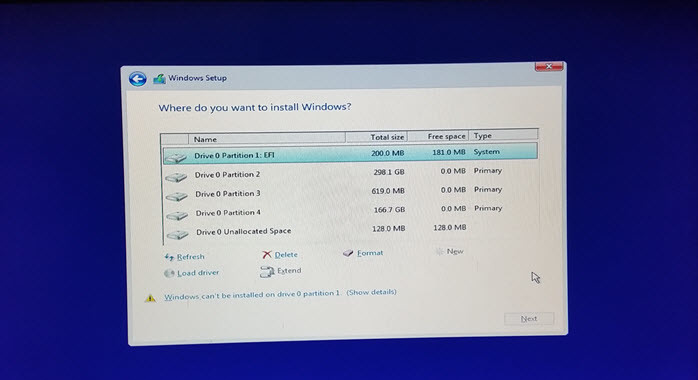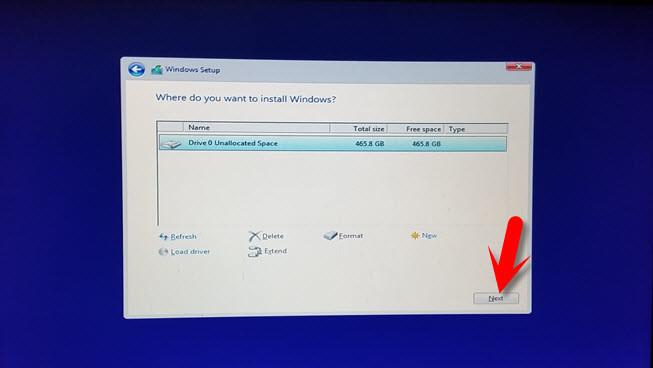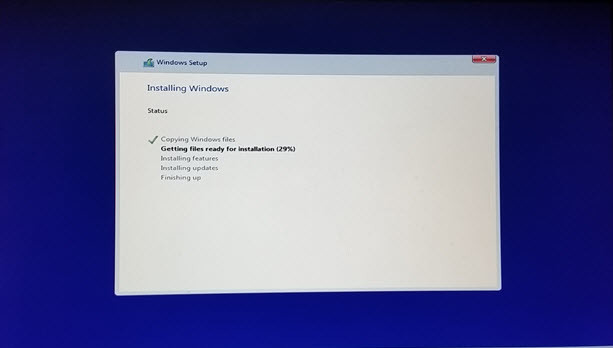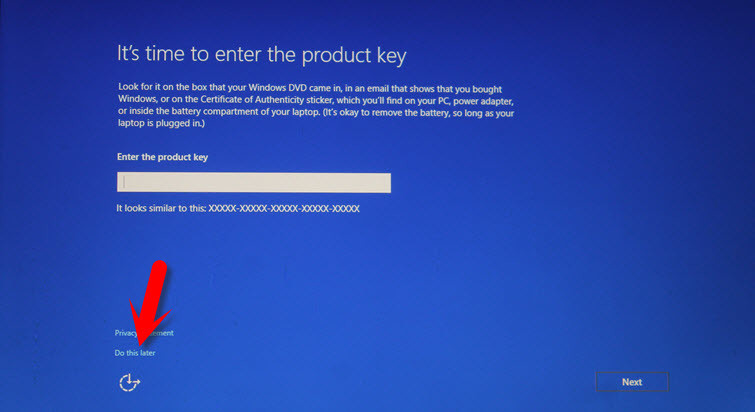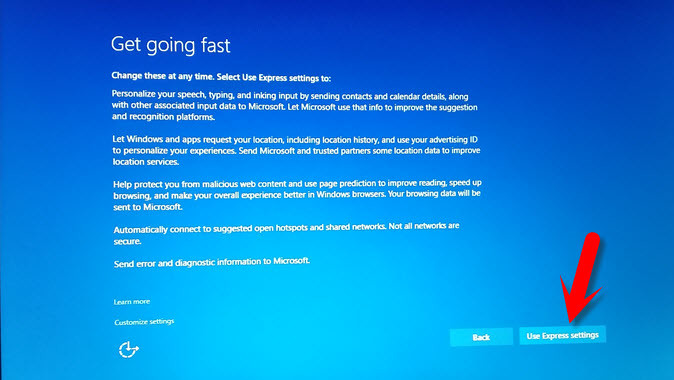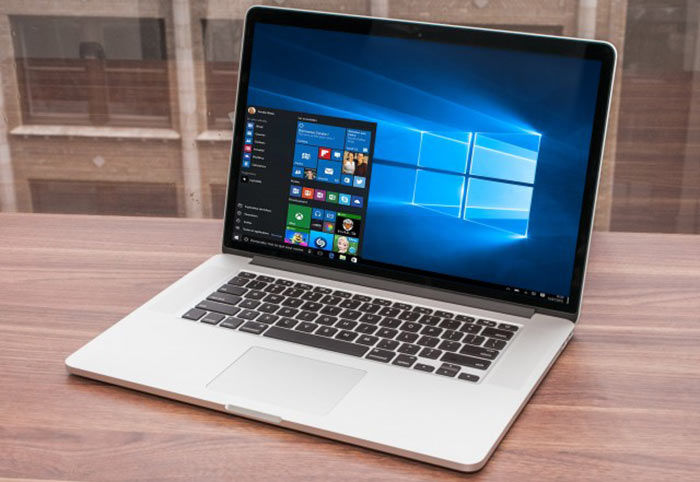Generally, one computer only runs one operating system. In some cases, users might need two operating systems on one computer, and it is more common when users are using Mac computers.
On Mac computers, the built-in Boot Camp has long been an official way to allow users to partition the hard drive and then install Windows. Even so, many people are still looking for alternative ways to install Windows 10 on Mac without Boot Camp. Because the Boot Camp doesn’t work seamlessly in many cases, it is tedious, error-prone, and it slows down installation productivity.
Thankfully, there are numerous third-party tools that help users install Windows systems without Boot Camp. Here in this article, we will introduce how can Mac users apply a tool called EaseUS OS2Go to install Windows. Moreover, virtual machines such as VMware and VirtualBox are also perfect choices to run Windows on macOS.
Preparations
Before starting to install Windows 10 on your Mac, you should prepare the following things:
- A USB stick with at least 64 GB or larger.
- A copy of a Windows 10 ISO image file or a Windows computer.
- A valid Windows 10 license that can legally and properly activate Windows.
- Download the Boot Camp Drivers.
If you prefer not to use Boot Camp, then the easiest method is to create a portable Windows USB so that you can use it on the Mac computer. There are plenty of third-party tools that can help users to create a portable Windows USB, one of such tools is EaseUS OS2Go. All you need is to prepare a larger enough USB drive, then leave the rest to EaseUS OS2Go.
Procedure 1. Create Windows Portable USB
First, you need to download and install EaseUS OS2Go on your computer. Then follow the detailed guide below to create a Windows portable USB.
Step 1. Install EaseUS OS2Go on your Windows computer, it will display your system drive’s used space. Plug in a USB drive that is larger than the system drive used space. Choose the target USB drive and click Next to continue.
Step 2. EaseUS OS2Go will notify you that the following operation would delete all data on your drive. Make sure that you have backed up all the important data. Click the Continue button to proceed.
Step 3. Adjust disk layout. The default disk layout on the target drive will be exactly the same as the resource drive. You could also edit the layout according to your needs. Tick the option there if you’re using a Solid State Drive as the Windows bootable drive. Next, click Proceed.
Step 4. Then EaseUS OS2Go will start to create the portable USB drive. It usually takes a while depending on your OS and Network condition. When the progress reaches 100%, the USB drive should be bootable now.
Step 5. Insert the portable Windows USB and start your Mac. Press the Option/Alt key. Choose the yellow EFI Boot icon to boot from the USB drive. Then follow the onscreen instruction to boot your Mac.
Procedure 2. Partition Mac Drives
If you still want to install Windows on your Mac, you can first create a bootable Windows USB with ISO files, then you need to partition the Mac drive and boot the Mac from the USB. Here are the detailed steps of these two procedures. As the Windows OS should be installed on a separated partition, it is an essential step to partition your drive. On Mac computers, you can apply the Disk Utility.
Step 1. Open Disk Utility, select your local drive (SSD or HDD) on the left and click Partition.
Step 2. Click on the small «+», then select the size of the partition, it should be at least 30 GB. You can name it anything as you want, and make sure the format is set to MS-DOS (FAT), then click Apply. Now you can see there are two separated partitions.
Procedure 3. Boot Your Mac from Bootable USB Drive
Now it’s the last step, boot your Mac from the created bootable USB drive.
Step 1. Insert the USB drive into your Mac.
Step 2. Restart the Mac and holding the Option key to enter the installing page.
Step 3. Choose EFI Boot, and the Mac should be boot from USB properly. Follow the Windows setup wizard to install the Windows OS on the created partition. The installing process will take some time, please wait patiently. During the process, the Mac will automatically restart several times.
Step 4. If you have created a portable USB with an activated Windows computer, just wait until the booting process finishes. If you have created the portable USB with Windows ISO files, then you need to activate the Windows system. Enter your Windows product key. If you lost the key, you can click the do it later button.
Step 5. You may find the keyboard or the mouse is not working under the Windows system, that’s because the bootable USB drive only contains basic drivers. You need to download and install Windows support drivers.
Step 6. Download and launch Boot Camp on your Mac, navigate to the USB drive in File Explorer, then go to WindowsSupport > BootCamp. Double-click the setup.exe.
Step 7. Follow the setup wizard, wait until it tells you to reboot the Mac to finish the installation. Now your Mac computer has dual systems.
If you want to switch from Windows system to macOS or vice versa, restart your Mac and holding the Option key to enter the booting page, choose the corresponding drive, you can switch from Windows and macOS.
Conclusion
It does seem a little bit complicated to install the Windows OS on a Mac computer. However, with EaseUS OS2GO, you have finished the most difficult part — creating a bootable USB. Then you could follow our step-by-step guide to finish the next procedures.
Installing Windows on a Mac should be a piece of cake with Bootcamp, but that
rarely is the case. In fact, I would personally say that Boot Camp Assistant
is one of the worst apps that comes with OS X and unlike the rest, it doesn’t
work seamlessly.
A few of its drawbacks:
- It only supports a drive with a single partition.
- It often throws very obscure error messages with limited detail.
- It re-downloads 1.6 GB Windows drivers every single time it runs. These are
placed under/Library/Application Support/BootCamp/WindowsSupport.dmgand
deleted and re-downloaded each time Boot Camp Assistant starts processing.
This post did take a lot of work to complie and I did bone my hard drive a
few times while trying certain ideas, so please throw out a thanks if it
helped you out 
Disclaimer: This guide below contains procedures which can potentially
destroy your partitions and data. I accept no responsibility for such loss so
please proceed at your own risk.
Update (2016-07-20): I have updated this post with further improvements
relating to downloading of Boot Camp drivers and ensuring that a Hybrid MBR is
not used (which would cause issues when installing Windows).
What You Will Need
- An 8 GB or larger USB stick
- A copy of the Windows 10 ISO
- A valid Windows 10 license
- A downloaded copy of unetbootin
Downloading Boot Camp Drivers
- Start Boot Camp Assistant
- Select Action / Download Windows Support Software
- Choose your Downloads directory, enter your password and then click
Save
This will be the only step that we will use Boot Camp Assistant for.
Creating a Bootable USB Windows 10 Installer
Formatting Your USB Stick
Attach your USB stick and start Disk Utility, select your USB drive in the
left panel under External, click Erase and set the options as follows
(exactly) and click Erase:
Name: FAT32
Format: MS-DOS (FAT)
Scheme: Master Boot Record
Turning Your USB Stick into a Windows Installer
Open unetbootin, enter your password, set the options as follows and
click OK:
Diskimage: checked, set to ISO and browse to your Windows 10 ISO
Type: USB Drive
Drive: Your USB drive (you should only see one entry here)
If you see more than one drive listed, you may confirm which is your USB drive
by opening the Terminal and typing:
You’ll see your USB drive in the output and it should look something like this:
/dev/disk2 (external, physical):
#: TYPE NAME SIZE IDENTIFIER
0: FDisk_partition_scheme *16.0 GB disk2
1: DOS_FAT_32 FAT32 16.0 GB disk2s1
Once you have kicked off unetbootin, grab a snack while the Windows ISO is
copied to the USB stick. This process takes around 15 minutes to complete.
Finishing Up
When this has completed, you may right click on the USB stick in Finder,
select Rename “FAT32” and rename it as you like (I’ll call mine
“WINDOWS 10”).
Finally, copy the WindowsSupport in your Downloads directory to
the Windows 10 USB stick so it’s easy to get to after our installation.
Partitioning Your Drive
In Disk Utility, select your internal hard drive on the left panel, and
click on Partition.
Click the + button and create a new partition of your desired size for your
Windows installation and name it as you wish (I’ll call mine “BOOTCAMP”). Ensure that the Format is set to MS-DOS (FAT) and click on Apply.
Ensuring that a Hybrid MBR is not used
Huge thanks to Rod’s post from the superuser post titled
Windows detects GPT disk as MBR in EFI boot.
Once you add a FAT32 partition with either Boot Camp Assistant or Disk Utility,
your disk is converted into a hybrid GPT / MBR disk which is actually not
supported by newer versions of Windows. In this step, we revert this
additional change made by Disk Utility by switching back to a pure GPT
partition table.
-
Dowload the latest version of
GPT fdisk
by browsing to the version, then gdisk-binaries and clicking the file
with the *.pkg extension (e.g. gdisk-1.0.1.pkg). -
Install GPT fdisk by running the installer you downloaded
-
Open a Terminal and check the state of your MBR
If your MBR partition is set to hybrid, please continue with step 4,
otherwise if it is set to protective, you may skip the rest of this
section. Simply type q and hit return to exit GPT fdisk. -
Type p to view the existing partition table and verify you’re working
on the correct disk -
Type x to enter the expert menu
-
Type n to create a fresh protective MBR
-
Type w to save your changes and confirm the change when asked
-
Type q to exit GPT fdisk
-
Run GPT fdisk to show your disk layout:
1sudo gdisk -l /dev/disk0Your partition table should look something like this:
1 2 3 4 5 6 7 8 9 10 11GPT fdisk (gdisk) version 1.0.1 Warning: Devices opened with shared lock will not have their partition table automatically reloaded! Partition table scan: MBR: protective BSD: not present APM: not present GPT: present Found valid GPT with protective MBR; using GPT.
Disconnecting All Devices From USB Ports
This step is critical as I have had rather serious problems during Windows
installation when certain external drives are connected.
Unplug everything from your Mac except your keyboard (if wired) and your
bootable Windows USB stick (which we prepared earlier).
If your Mac contains multiple physical drives, you will need to disconnect
all disks except the one which you intend to install Windows on or you may
encounter the following error:
Windows could not prepare the computer to boot into the next phase of installation. To install Windows, restart the installation.
Booting From the USB Stick
Ensure that the USB stick containing the Windows installer is inserted and
then restart your Mac while holding down the option (alt) key.
You should now be presented with a list of bootable drives. Select the USB
drive (usually titled “EFI Boot”) to begin installing Windows.
Correcting Your Windows Hard Disk Partition
When you are asked Where do you want to install Windows?, select the
Windows partition created earlier (which I called “BOOTCAMP”) and click
Delete.
Next, select the chunk of Unallocated Space and click on New to create
a proper Windows NTFS partition.
Note: OS X only supports creation of FAT filesystems, so this is why we need
to re-create the partition ourselves during install.
Completing the Installation
Allow the installer to complete and boot into Windows.
Installing Boot Camp Support Software
Once Windows is up and running, install the Boot Camp Support software running
WindowsSupport/BootCamp/Setup.exe on your USB stick.
Note: The installer takes a little while to show up, so please be patient.
You may encounter a known issue whereby the Boot Camp Support Software
installer locks up while installing Realtek audio.
If this occurs, you will need to open Task Manager and kill the
RealtekSetup.exe process.
After the installer has completed, answer No when prompted to reboot
and install the Realtek drivers manually by running
%USERPROFILE%\AppData\Local\Temp\RarSFX0\BootCamp\Drivers\RealTek\RealtekSetup.exe.
If you can’t find this file, check any other directories starting with
RARSFX under %USERPROFILE%\AppData\Local\Temp.
Once complete, reboot Windows.
What You Will Need to Configure Windows
- The latest version of SharpKeys
- The flipflop-windows-sheel binary (see README for a download link)
Configuring Windows
Mapping Your Mac Keyboard
Install and run SharpKeys and then configure the following mappings to
correct your Mac keyboard so that it behaves like a regular Windows keyboard:
Function: F13 -> Special: PrtSc
Special: Left Alt => Special: Left Windows
Special: Left Windows => Special: Left Alt
Special: Right Alt => Special: Right Windows
Special: Right Windows => Special: Right Alt
Note: for F13, you’ll need to select Press a key and click F13 on your
keyboard.
Switching to Natural Scrolling
If you wish to flip scrolling direction to match that on OS X, run
FlipWheel.exe and then click on Flip All.
Enabling Num Lock on Boot
Paste the following into a file named Enable NumLock on Boot.reg then
import this into the registry to enable NumLock when Windows boots up
(it doesn’t by default).
Windows Registry Editor Version 5.00
[HKEY_USERS\.DEFAULT\Control Panel\Keyboard]
"InitialKeyboardIndicators"="80000002"
Completing Configuration
That’s it, give your machine one last reboot and you’ll have a fully working
Windows 10 installation.
Note: I have found Apple’s Magic Mouse to be extremely unreliable using
the Boot Camp drivers from Apple. As such, I recommend purchasing a Logitech
(or similar) mouse for use in Windows. I have no trouble plugging the
wireless receiver for my Logitech mouse into one of the USB ports of my wired
Apple Keyboard and it’s so tiny that you can’t see it at all.
Cleaning up a Windows Installation
Removing the Windows Partitions
If you decide to remove Windows, you may find that Disk Utility doesn’t allow
you to delete the two partitions that have been created by the Windows
installer.
This happens due to the fact that the first small partition created is of a
type called Microsoft Reserved which OS X’s Disk Utility doesn’t support.
The safest way to delete these partitions is through the Windows installer. So
simply boot from your USB stick as we did before and when you reach the
Where do you want to install Windows? question, you may delete your
“BOOTCAMP” partition and the small 16 MB partition of type MSR (Reserved)
just above the BOOTCAMP partition.
Once done, simply quit the installer by clicking the X in the top right corner
of each Window and reboot back into OS X.
Removing the Boot Entry
Even though we have removed the Windows partition, a boot entry will still be
present when holding down option (alt) during boot.
You may remove these items by running the following in your Terminal:
|
|
Установка Windows на Mac OS возможна и это довольно просто, если подойти к этому делу подготовленным. В этой статье мы расскажем, как установить Windows на Mac OS – возможные способы и варианты, а также дополнительная информация и тонкости процесса.
У пользователей MacOS может возникнуть потребность в использовании операционной системы Windows, по нескольким причин, начиная от привычки использования ОС от Microsoft, заканчивая необходимостью использования специального ПО, которое предназначено только для работы в Windows. Чтобы не приобретать новое устройство, а использовать прелесть отличных характеристик оборудования и использования нужной системы, в MacOS есть возможность использовать несколько систем на одном устройстве.
Что следует выполнить перед установкой другой ОС?
- Узнать про совместимость оборудования и версий ОС (совместимость с Windows 10 и совместимость с 7-й версией системы).
- Выполните проверку наличия обновления для MacOS и утилит и выполните обновление, если они будут найдены.
Boot Camp
Установку Windows 10 на Mac OS Sierra можно выполнить через специальную утилиту BootCamp.
Утилита «Ассистент Boot Camp» — ПО от компании Apple, которая позволяет создать дополнительный раздел на диске, для установки дополнительной ОС и дальнейшего использования.
Перед установкой необходимо загрузить образ нужной системы Windows. Сделать это можно на официальном сайте Microsoft.
- Пройдите на страницу загрузки образа Windows 10 (или 7-й версии, но тут потребуется ключ).
- Выберите нужную систему и язык, после чего начните загрузку образа.
Чтобы запустить Boot Camp, откройте Программы – Утилиты и выберите «Ассистент Boot Camp».
В окне Boot Camp необходимо будет выбрать количество свободного пространства, которое будет отводиться под Windows. При выборе рекомендуем отталкиваться от ваших нужд — будете ли вы играть в игры и устанавливать «тяжелые» приложения или же редко использовать систему.
Стоит заметить, если в Boot Camp выделить 100 GB свободного пространства, после установки системы вам будет доступно около 75 Gb.
В строке ISO-образ диска укажите путь к загруженному образу системы. Нажмите кнопку «Установить» и начнётся загрузка ПО для дальнейшей настройки.
После перезагрузки устройства начнётся стандартный процесс установки Windows. На примере «десятки», рассмотрим основные моменты.
- Первоначально, согласитесь с условиями лиц соглашения.
- Выберите версию и разрядность ОС.
- На этапе выбора раздела, куда будет выполняться копирование файлов, нужно выбрать раздел с названием BootCamp.
- Начнётся процесс копирования файлов и подготовки основных компонентов системы.
- По окончании всех перезагрузок вас встретит окно предварительной настройки системы, где нужно будет указать учетную запись Microsoft для входа в систему, если таковой нету, создайте локальный профиль. Также потребуется указать настройки конфиденциальности, которые рекомендуется отключить – это немного ускорит устройство и Microsoft получит меньше ваших данных.
- По окончании вас встретит рабочий стол Windows и маленькое окно приложения BootCamp. Необходимо будет разрешить приложению выполнить настройку драйверов системы, чтобы разрешение экрана стало корректным и все компоненты, такие как подключение к сети, Bluetooth и другие.
Установка Windows 7 на Mac через BootCamp выполняется таким же образом, единственное отличие в приветственном экране и первоначальном экране.
- Обновление всех необходимых для корректной работы драйверов устройства выполняется также через Boot Camp.
- Рекомендуется первоначально загрузить пакет необходимых драйверов с сайта Apple.
- Система будет работать быстро и отзывчиво, используя по максимуму ресурсы устройства. Также малая вероятность, что возникнут проблемы со стороны драйверов, так как Apple относится к этому очень важно и внимательно. Но никто не отменял баги и проблемы со стороны «Винды», хотя на 10-й версии, проблем всё меньше и меньше (до выхода крупного обновления).
- Использование MacOS и Windows одновременно невозможно, так как устройство может работать и использовать ресурсы только с одной запущенной системой. И тут на помощь приходят средства виртуализации, о чем пойдет речь далее.
Важно! Иногда при установке Windows на Mac может возникать ошибка no Bootable device. Чтобы решить эту проблему, воспользуйтесь следующими советами:
- Использование легального образа (никаких пиратских сборок).
- Попробуйте изменит приоритет загрузки на MacOS и повторите установку.
- Попробуйте использовать USB-накопители или ISO-файлы при использовании Boot Camp.
Parallels Desktop
Возникают ситуации, когда может потребоваться установка Windows 7 или 10 на Mac без использования BootCamp. Например, когда нужно использовать и MacOS и Windows одновременно, но иметь 2 устройства слишком затратно и неудобно. На помощь придут средства виртуализации, одно из которых Parallels Desktop для Mac.
Parallels Desktop – программное решение для создания виртуальной машины и последующей установки Windows, Linux и других ОС. Позволяет использовать другую операционную систему, без перезагрузки устройства и наслаждаться функциональностью разных ОС одновременно.
На данный момент доступна последняя версия Parallels Desktop 14 по цене от 4 990 рублей.
Перейти на официальный сайт Parallels Desktop
Приложение обладает поистине выдающимся функционалом:
- Общий рабочий стол для «Винды» и MacOS.
- Использование Win-приложений в интерфейсе MacOS без необходимости запуска виртуальной машины.
- Резервное копирование, общий буфер обмена, Drag-n-Drop, огромный инструментарий для работы с «оконной» ОС и многое другое.
Вместе с Parallels Desktop вы узнаете, как быстро поставить Windows 10 на Mac второй системой, лишь нажатием одной кнопки. Что для этого нужно сделать:
- Загрузите и установите пробную версию Parallels Desktop на официальном сайте.
- И нажмите Install для старта
- Автоматически начнётся загрузка образа
- И по окончании всех процедур будет уведомление об успешном завершении инсталяции
Разработчики позаботились о том, чтобы процесс происходил максимально просто и быстро для пользователей Mac. Также разберём, как можно выполнить чистую установку Windows 7 или 10 на Mac OS high sierra или позднее с использованием Parallels, на примере 11 версии:
- Запустите Parallels Desktop и выберите «Install».
- Укажите путь к установочному диску, USB-флешке или образу системы.
- Вы можете выбрать экспресс установку системы, которая потребует от вас только ключ системы и минимум действий. Или же есть снять галочку с экспресс установки, самостоятельно настроить процесс.
- Вы сможете выбрать не только количество активных ядер, оперативной памяти или памяти накопителя, но также и видеопамять, использование системы, приоритет загрузки и многое другое.
- После этого начнётся стандартная процедура инсталяции. Вам потребуется выбрать язык и выбрать место установки.
- После чего, Windows 7 будет успешно установлена. Вам потребуется только дать имя профилю и ПК, создать пароль (если требуется), ввести ключ активации, настроить время и параметры подключения к сети Интернет.
- Система готова к использованию
Приложение действительно очень функциональное и разом решаем множество проблем. Но если у вас нет 5 тысяч рублей на покупку лицензии, покажем еще один способ как установить Windows 7,10 на Mac OS средствами виртуализации VMware.
Oracle Virtualbox
VM VirtualBox – средство виртуализации от компании Oracle. Бесплатное приложение, которое позволит вам запустить Windows 7 или 10 без отдельной установки на Mac или BootCamp. Функционал не такой богатый как у Parallels Desktop, но это решение бесплатно и позволит использовать 2 системы одновременно. Что для этого нужно:
- Загрузите и установите VM VirtualBox для OS X hosts на официальном сайте.
- Загрузите образ нужной системы, например «Десятку»
- Создайте новую виртуальную машину. Введите имя, тип и версию ОС
- Задайте объем оперативной памяти
- Задайте объем накопителя для виртуалки и укажите тип диска как VDI (VirtualBox Disk Image)
- После того, как виртуальная машина будет создана, нажмите на настройки «Settings».
- Во вкладке «Storage» укажите путь к образу загруженной ОС, после чего запустите виртуалку.
- Начнётся стандартная процедура установки системы. С порядком можете ознакомиться в пункте про Boot Camp.
Как видно из это статьи, вместо Mac OS довольно легко поставить Windows 7, 8 или 10, нужно только выбрать удобный для вас вариант. Использование всей мощности устройства, но мириться только с одной активной ОС или же полноценное использование всех преимуществ Винды и MacOS, но с незначительными потерями производительности.
Отличного Вам дня!
Mac-компьютеры являются популярным выбором среди пользователей благодаря своей производительности и надежности. Однако, иногда возникает необходимость установить операционную систему Windows на Mac для использования определенных программ или игр.
Обычно для установки Windows на Mac используется программа Bootcamp, предоставленная Apple. Однако, в данной статье мы рассмотрим альтернативный способ установки Windows 7 на Mac с использованием флешки без необходимости в программе Bootcamp.
Этот подробный гайд подойдет как для пользователей, которые ранее не устанавливали операционные системы на Mac, так и для тех, кто имеет определенный опыт в этом деле. Мы предоставим пошаговые инструкции и необходимое программное обеспечение, чтобы облегчить вам процесс установки Windows 7 на Mac.
Содержание
- Подготовка флешки и загрузочного образа
- Шаг 1: Подготовка флешки
- Шаг 2: Загрузочный образ
- Создание раздела для Windows на Mac
- Установка Windows с флешки
- Установка драйверов и программ на Windows
- Настройка загрузки между macOS и Windows
- Основные проблемы при установке Windows и их решение
Подготовка флешки и загрузочного образа
Перед установкой Windows 7 на Mac необходимо подготовить флешку и загрузочный образ операционной системы. В данном разделе мы расскажем вам, как это сделать.
Шаг 1: Подготовка флешки
Для установки Windows 7 на Mac вам понадобится флешка емкостью не менее 8 ГБ. Следуйте этим шагам для подготовки флешки:
- Подключите флешку к компьютеру.
- Откройте программу «Дисковая утилита».
- Выберите флешку в списке слева.
- Перейдите на вкладку «Стереть».
- Убедитесь, что формат установлен как «MS-DOS (FAT)».
- Нажмите кнопку «Стереть», чтобы отформатировать флешку.
Шаг 2: Загрузочный образ
Для установки Windows 7 на Mac вам понадобится загрузочный образ операционной системы. Вот два способа, как его получить:
- С помощью официального диска: Если у вас есть официальный диск Windows 7, вы можете создать образ диска, используя специальное программное обеспечение, такое как UltraISO или PowerISO.
- С помощью загрузочного образа из интернета: Если у вас нет официального диска, вы можете найти загрузочный образ Windows 7 в интернете. Убедитесь, что вы загружаете его с надежного источника.
После получения загрузочного образа сохраните его в удобном для вас месте на компьютере.
Теперь, когда флешка и загрузочный образ готовы, вы можете перейти к следующему разделу — «Установка Windows 7 на Mac с флешки».
Создание раздела для Windows на Mac
Перед установкой Windows 7 на Mac необходимо создать отдельный раздел на жестком диске. Для этого следуйте инструкциям ниже:
- Откройте программу «Дисковая утилита», которая находится в папке «Служебные программы».
- Выберите жесткий диск, на котором установлена macOS, в левой части окна «Дисковая утилита».
- Нажмите на кнопку «Раздел» в верхней панели инструментов.
- В открывшемся окне нажмите на плюс (+) в нижней части окна для добавления нового раздела.
- Выберите размер раздела и дайте ему имя, например «Windows».
- Выберите формат «MS-DOS (FAT)» для нового раздела.
- Нажмите на кнопку «Применить», чтобы создать новый раздел.
После создания раздела для Windows вы будете готовы к установке операционной системы на Mac. Убедитесь, что у вас есть установочный образ Windows 7 и продолжайте следующий шаг установки.
Установка Windows с флешки
Установка операционной системы Windows на компьютер можно осуществить с помощью флешки. Для этого необходимо выполнить следующие шаги:
- Подготовка флешки
- Скачивание образа Windows
- Запись образа на флешку
- Подключение флешки к компьютеру
- Загрузка компьютера с флешки
- Установка Windows
- Завершение установки
Перед началом установки операционной системы необходимо подготовить флешку. Для этого следует отформатировать ее в формате FAT32 или NTFS и создать загрузочный раздел.
Далее необходимо скачать образ операционной системы Windows. Образ можно скачать с официального сайта Microsoft или с других надежных источников.
После загрузки образа необходимо его записать на флешку. Для этого можно воспользоваться специальной программой для записи образов, например, Rufus.
После записи образа на флешку необходимо ее подключить к компьютеру, на который будет устанавливаться Windows.
Далее необходимо загрузить компьютер с подключенной флешки. Для этого при включении компьютера нужно нажать соответствующую клавишу (обычно F12 или Del), чтобы вызвать меню выбора устройства загрузки.
После загрузки с флешки отобразится экран установки Windows. Следуйте указаниям мастера установки, выбирая язык, регион, вводите ключ продукта и т.д. При необходимости можно выбрать раздел для установки операционной системы.
После установки Windows компьютер можно перезагрузить и начать пользоваться новой операционной системой.
Таким образом, установка операционной системы Windows с флешки достаточно проста и не требует больших усилий. Главное — следовать инструкциям и выбирать правильные настройки в процессе установки.
Установка драйверов и программ на Windows
После успешной установки Windows 7 на ваш Mac, вам потребуется установить необходимые драйверы и программы для полноценной работы операционной системы. В этом разделе мы расскажем о нескольких важных шагах, которые помогут вам справиться с этим.
- Установка драйверов для Mac-устройств:
- Установка важных программ:
Шаг 1: Перейдите на официальный сайт Apple и найдите раздел поддержки с драйверами для Windows. Скачайте необходимые драйверы для вашей модели Mac.
Шаг 2: Скопируйте скачанные драйверы на флешку или другое съемное устройство, чтобы передать их на установленную Windows.
Шаг 3: Подключите съемное устройство с драйверами к компьютеру с Windows 7.
Шаг 4: Откройте проводник и найдите драйверы на подключенном устройстве. Запустите файлы с расширением .exe или .msi для начала установки.
Шаг 5: Следуйте инструкциям установщика для завершения процесса установки.
Шаг 1: Зайдите в официальный интернет-магазин Microsoft — Microsoft Store, чтобы скачать и установить необходимые программы.
Шаг 2: Воспользуйтесь поиском, чтобы найти нужные вам программы. Проверьте их совместимость с Windows 7.
Шаг 3: Нажмите на кнопку «Установить» и следуйте дальнейшим инструкциям, чтобы скачать и установить программы.
Поздравляю! Вы успешно установили все необходимые драйверы и программы на Windows 7 на вашем Mac. Теперь вы можете наслаждаться полноценной работой на операционной системе Windows.
Настройка загрузки между macOS и Windows
После установки Windows 7 на Mac с флешки без Bootcamp, вам может потребоваться настроить загрузку между macOS и Windows. Это позволит вам выбирать операционную систему при каждом включении компьютера.
- Перезапустите компьютер.
- Нажмите и удерживайте клавишу «Option» (или «Alt») на клавиатуре, когда появится звук загрузки Mac.
- После некоторого времени на экране появится окно выбора операционной системы.
- Используйте стрелки на клавиатуре, чтобы выбрать нужную операционную систему.
- Нажмите клавишу «Enter», чтобы начать загрузку выбранной операционной системы.
Вы также можете настроить определенную операционную систему по умолчанию:
- Запустите «Системные настройки» на Mac.
- Выберите «Загрузка» в разделе «Система».
- Нажмите на иконку «Предпочтительный диск» в окне «Загрузка».
- Выберите нужную операционную систему и нажмите «Восстановить по умолчанию».
Теперь, каждый раз при включении компьютера, будет загружаться выбранная вами операционная система по умолчанию. Вы всегда сможете выбрать другую операционную систему, используя клавишу «Option» при включении.
Основные проблемы при установке Windows и их решение
1. Необходимость создания загрузочной флешки с Windows 7
Прежде чем установить Windows 7 на Mac, вам потребуется создать загрузочную флешку. Для этого вам понадобится скачать образ Windows 7 в формате ISO и использовать специальную программу для записи образа на флешку, например, Rufus или UNetbootin.
2. Ошибка «Недостаточно места на диске»
При установке Windows 7 на Mac может возникнуть ошибка о недостаточном месте на диске. Это может произойти, если раздел, на который вы хотите установить Windows, уже содержит другую операционную систему или большое количество данных. Решение этой проблемы может быть удаление ненужных данных или изменение размера раздела с помощью специальных программ, таких как Disk Utility.
3. Ошибка «Драйверы не найдены»
При установке Windows 7 на Mac может возникнуть ошибка, связанная с отсутствием нужных драйверов. Это может произойти, если ваш Mac слишком новый и драйверов для него еще не существует или если вы использовали неправильные драйвера. Чтобы решить эту проблему, вам потребуется скачать и установить соответствующие драйверы с официального сайта производителя вашего Mac или установить их с помощью специальных утилит, таких как Boot Camp Assistant.
4. Проблемы с разделением диска
При установке Windows 7 на Mac может возникнуть проблема с разделением диска на разделы для Windows и Mac. Это может произойти, если на вашем Mac уже установлена другая операционная система или если на диске содержатся важные данные. Чтобы решить эту проблему, вам потребуется использовать специальные программы для разметки диска, такие как Disk Utility или Boot Camp Assistant.
5. Ошибка «Отсутствует поддержка EFI»
При установке Windows 7 на Mac может возникнуть ошибка, связанная с отсутствием поддержки EFI (Extensible Firmware Interface) в вашем Mac. Это может произойти, если ваш Mac слишком старый и не поддерживает эту технологию. Решить эту проблему можно, установив более старую версию Windows, которая поддерживает старые технологии загрузки, или обновив EFI на вашем Mac.
6. Ошибка «Не удалось установить Windows»
При установке Windows 7 на Mac может возникнуть общая ошибка «Не удалось установить Windows». Это может произойти по разным причинам, таким как поврежденный образ Windows, неправильно настроенные параметры установки или проблемы с железом вашего Mac. Для решения этой проблемы вам потребуется проверить целостность образа Windows, проверить и исправить параметры установки и убедиться, что ваш Mac работает исправно.
| Проблема | Решение |
|---|---|
| Необходимость создания загрузочной флешки с Windows 7 | Скачайте образ Windows 7 в формате ISO и используйте программу для записи образа на флешку, например, Rufus или UNetbootin. |
| Ошибка «Недостаточно места на диске» | Удалите ненужные данные или измените размер раздела с помощью программы, такой как Disk Utility. |
| Ошибка «Драйверы не найдены» | Скачайте и установите нужные драйверы с официального сайта производителя вашего Mac или с помощью утилит, таких как Boot Camp Assistant. |
| Проблемы с разделением диска | Используйте программы для разметки диска, такие как Disk Utility или Boot Camp Assistant. |
| Ошибка «Отсутствует поддержка EFI» | Установите более старую версию Windows или обновите EFI на вашем Mac. |
| Ошибка «Не удалось установить Windows» | Проверьте образ Windows, настройте параметры установки и проверьте работу вашего Mac. |
Let me start the topic with some questions. Is it possible to install Windows 10 on Mac OS? Do you know how to install Windows 10 on Mac OS? Does it need many requirements? I’m going to tell you the answer to all these questions. Yes, it’s possible to install Windows on a Mac operating system. There are two main ways that Windows 10 can be installed on Mac OS.
- Without Boot Camp
- With Boot Camp
If you want to install Windows 10 on Mac OS, there are two ways. First using boot camp and without boot camp. In this article, I’m going to tell you the first way. Install Windows 10 on Mac OS without boot camp. You do not need any software. Only the thing you need a bootable flash drive for Windows with Windows 10 operating system file.
- Download Windows 10
- Download Boot Camp Driver
- A bootable USB Flash Drive
Install Windows 10 on Mac Without Boot Camp
Once you have created a bootable USB flash drive for Windows, then download the “Boot Camp driver” for Windows. For the first time when you install Windows on Mac, so the “Internet, sound, graphics, and other drivers are disabled”, and they are not working. You Have to download it, after installation of Windows 10. You have to install the drivers using boot camp.
Warning: Here I’m going to have a clean installation of Windows 10 on Mac computer. It means that I’m going to remove the full hard drive of my Mac computer if you want to dual boot Windows 10 with Mac so visit the article below.
- How to dual boot Windows 10 with Mac OS X El Capitan?
Now that you have a bootable USB flash drive insert it to the laptop USB port. Restart your device then press and hold the “Option Key” from the keyboard. You have to continue holding the option key until you see the USB flash drive and Mac hard disk.
Press and Hold the Option Key
After holding the option key, a screen will be shown to you. Choose the USB flash drive and hit enter.
Choose USB Flash Drive
After these steps, it’s elementary and straightforward. If you know the Windows 10 Installation. This is going to work very efficiently. Now, choose the Language and hit the “Next” button.
Choose Language and Keyboard
Click “Install Now“.
Installing Windows 10 on Mac
Read the License terms then Check the box “I Accept the License Terms”. Click on the “Next” button.
Accept License Agreement
Now Choose a type of installation that you want. I am going to install Windows 10 on a Mac computer, so I can’t choose an upgrade because I haven’t installed an OS to upgrade it. When you Choose Upgrade, all the files, settings, and application are moved to the next Windows with these options. If you select “Custome” all the data, settings, and applications aren’t moved to the next Windows. All the Windows settings will be removed, and you have to do all the stuff by yourself. Now, I want to click on “Custom Installation”.
Clean Installation of Windows 10 on Mac
Here, I’m going to format all the drives and have a clean installation of Windows 10 on Mac computer. If you format all the drives, so everything inside your computer will be erased. Be careful that you should have a backup of your data. To delete the drive, select it and hit the Delete button.
Formatting Drives
As you can see the screenshot below, I have deleted all the drives. Now, I have only a drive to Install Windows 10 on Mac computer.
Drivers are Formatted
This process is going to take some minutes, and your computer will restart during installation for several times. When all the features installed, choose your USB flash drive off from the computer.
Installing Windows 10
Your computer will restart for several times and don’t worry about it. After restarting your computer for several times, you will see the screenshot below. Here you will be asked to enter the Windows 10 product key. If you have purchased this operating system to enter the product key. Otherwise, choose “Do this later“.
Skip Windows 10 Product Key
You will be prompted “Get going fast” window. Here you have two ways to do the work. The first way is custom Setting, and the second way is to use express Setting. I prefer to use “Express Setting“.
Use Express Settings
This is the last step for this demonstration. In “Create an account for this PC”, you have to enter your account info like the screenshot below. Finally, click the Next button on the bottom right-hand side.
Create a User Account
How to Install Windows 10 Drivers on Mac OS?
To install Windows 10 Drivers on Mac OS, First, download the Bootcamp software from the link above. Now, wait for some minutes, then the Windows will be installed on your Mac computer. Copy the Bootcamp software that you have to download on the first step of this article. Click on the Bootcamp setup then install.
Install Boot Camp on Windows 10
Once you installed the Bootcamp software, then this software is going to install most of the Windows 10 drivers on Mac computer. These drivers are “Wi-Fi or Internet, Graphic, Sound, Mouse, etc.”.
Installing Windows 10 Drivers on Mac OS
Here is the preview or screenshot of installing Windows 10 on a Mac device.
Installed Windows 10 on Mac OS
Conclusion
This was the simple way of Installing Windows 10 on Mac OS. The next article, I’m going to show you how to install Windows 10 on Mac OS with boot camp. Also, you will get info about boot camp built-in software on Mac computers. I hope that you have gotten anything from this article. If you have a question, feel free to ask us on this post. Thanks for being with us.
